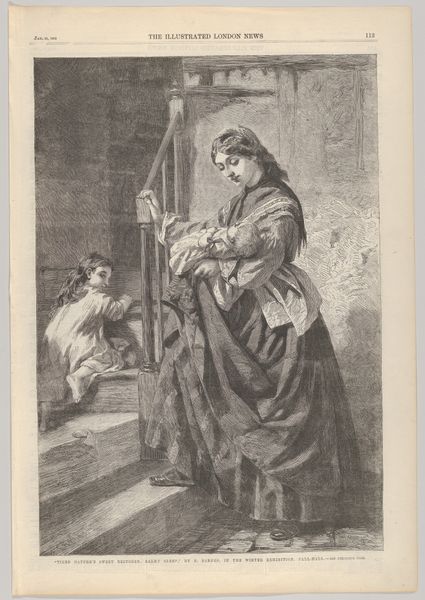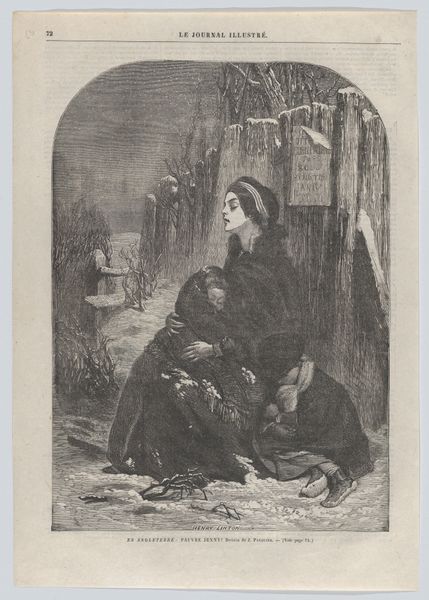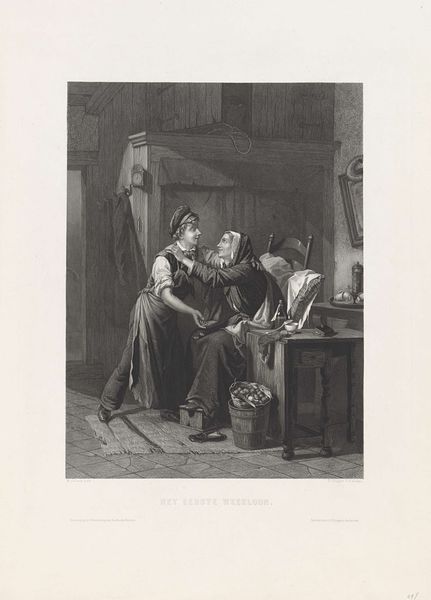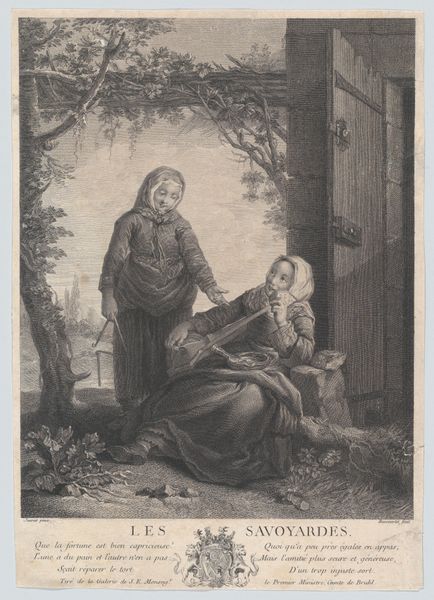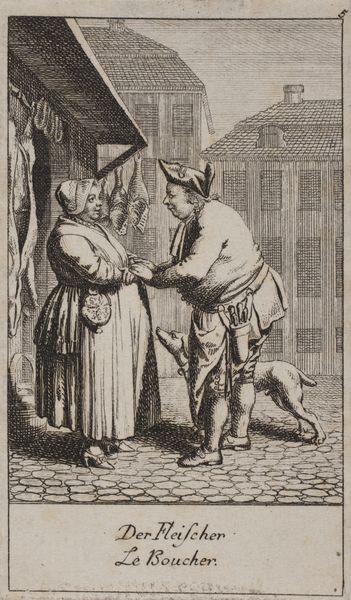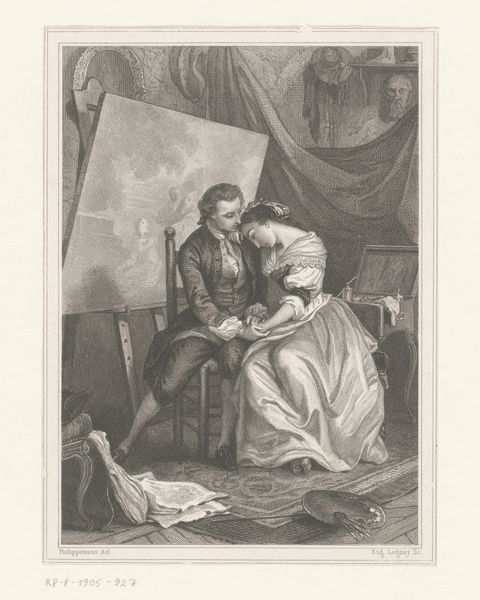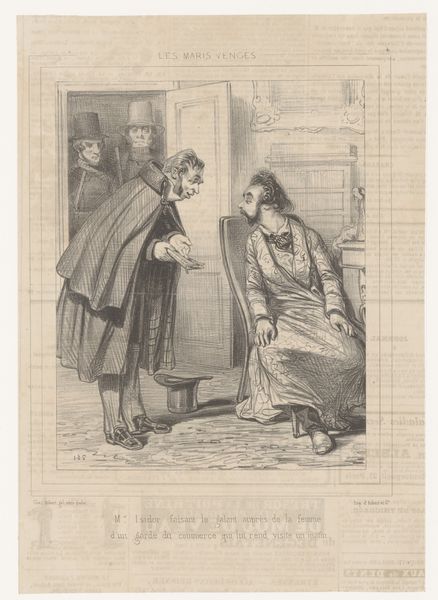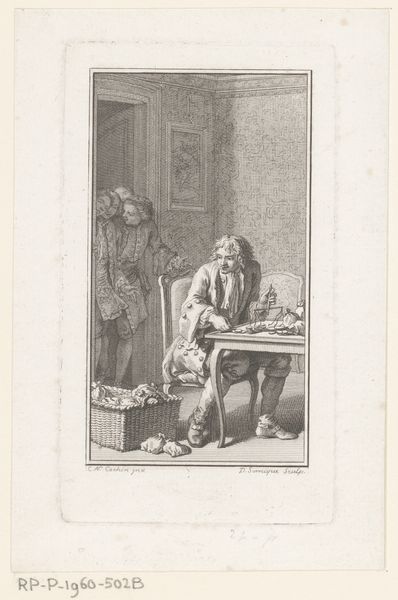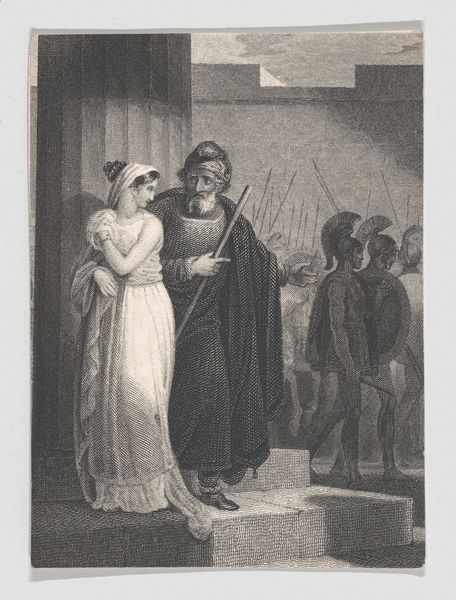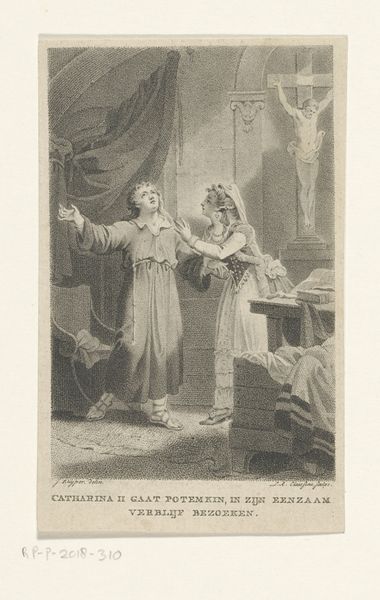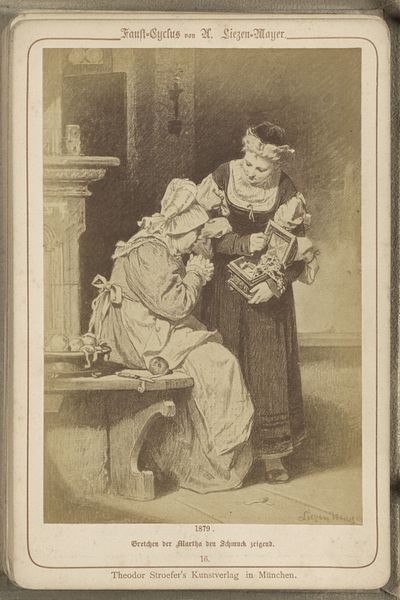
L'Innominato, from "Illustrated London News" 1862
0:00
0:00
Dimensions: Image: 9 3/16 × 6 9/16 in. (23.3 × 16.7 cm) Sheet: 9 9/16 × 6 7/8 in. (24.3 × 17.4 cm)
Copyright: Public Domain
Curator: This is "L'Innominato," an engraving from the "Illustrated London News," dating back to 1862, after a painting by Guardassoni of Bologna. The print is currently held at the Metropolitan Museum of Art. Editor: There's a stark intimacy here, a pronounced tenderness I wouldn’t expect. The sharp contrast in the engraving heightens the emotion, it almost feels tactile despite being rendered with such precise lines. Curator: The "Illustrated London News" played a crucial role in disseminating visual culture during the Victorian era, particularly in bringing narrative painting, often tied to historical or literary events, to a broad audience. The figure depicted, L'Innominato, is a character from Alessandro Manzoni's novel "The Betrothed," a tale that explores power, morality, and redemption against the backdrop of 17th-century Lombardy. Editor: So, how does the act of reproduction – the transformation from painting to engraving – shift our understanding of the subject, its aura even? Look at the fabric rendered here; it’s not merely depicted, it's actively constructed, through crosshatching that mimics the weaves. It forces you to consider the labour embedded within the artwork's materiality. Curator: Indeed. Printmaking made this type of imagery more accessible. "L'Innominato," originally a ruthless and powerful nobleman, undergoes a spiritual transformation, triggered by his encounter with Lucia. His vulnerability is central to Manzoni's exploration of faith, repentance, and the possibility of change within rigid social structures. And the illustration reproduces a scene of emotional rawness of that event which is really powerful to many people. Editor: Absolutely. It also prompts us to consider the economic conditions under which it was created. Engravings such as this relied on the skilled labor of artisans who reproduced imagery for mass consumption. How does this mode of production affect the reception of such emotionally charged scenes? I mean, it raises some interesting questions about commodification of religious experience and accessible versions of morality. Curator: Precisely. "L'Innominato" reflects Victorian society’s interest in historical narrative, the individual’s moral journey and a popular push for a certain degree of sentimentalism in its approach to religion, redemption, and societal reform. Editor: Thinking about this transfer of form from canvas to the illustrated press really highlights not only the content, but the context that it inhabits in material and cultural forms, like an ecosystem for cultural imagery. Curator: Very insightful! Editor: Thanks.
Comments
No comments
Be the first to comment and join the conversation on the ultimate creative platform.
